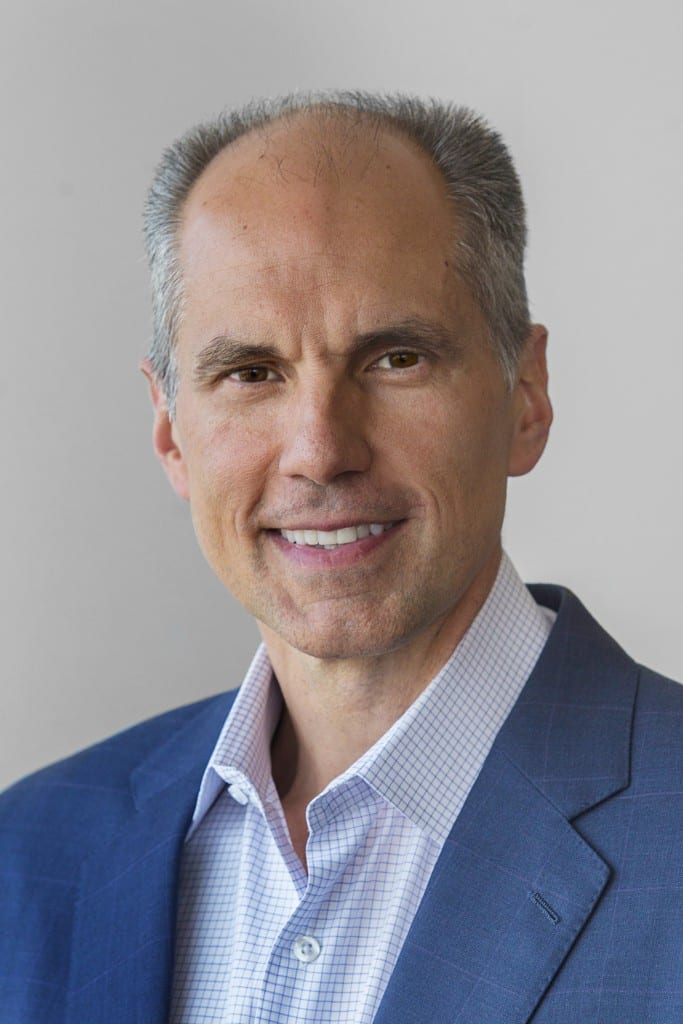It is commonly accepted that telecoms operators face a variety of pressures in what is a rapidly developing and highly innovative industry, technology-wise.
December 3, 2015

VENDOR SPOTLIGHT – F5
Telecoms.com recently partnered with F5 Networks to discuss how the technological landscape for telecoms operators is evolving. Here, we speak with Chief Executive Officer Manny Rivelo to get his thoughts on NFV, IoT, Security and the rapid pace of evolution in the industry.
It is commonly accepted that telecoms operators face a variety of pressures in what is a rapidly developing and highly innovative industry, technology-wise. Whether it is down to external forces like new market entrants, competition from over-the-top providers or regulatory requirements; or if it comes down to internal process inefficiency or technological optimisation, the telecoms industry is in a state of change as we see a significant level of industry consolidation and service evolution occurring.

F5 Networks Ceo Manny Rivelo
According to the CEO of telecoms network provider F5 Networks, Manny Rivelo, a lot of the change the industry is seeing at the moment is being driven by operators looking to optimise their networks and drain every potential dollar, pound or euro they can.
“I see a couple of pressures, the first is optimisation,” he says. “Service providers have been trying to get more optimisation out of their networks for a long time, in the sense that they’re operating in their speeds-and-feeds game, getting faster pipes and therefore higher pricing points. The problem with that is it’s a case of diminishing returns at this point for service providers, so they’re looking to optimise and take cost out of the network. That can be things like the consolidation of services, trying to change from a capex to an opex model, but we’re also seeing SPs looking increasingly at monetisation opportunities and how to get more dollars out of their network.”
One of the principal technologies operators are exploring today to assist new service-delivery, service monetisation and network optimisation is network functions virtualization. It’s been roughly three years since NFV rose to prominence when a core group of the world’s leading Tier 1 operators congregated and proposed a transition from performing traditionally hardware-based network functions and shifting them into software utilising the cloud and general purpose hardware.
“It’s come a long way,” says Rivelo. “We now have multiple public certifications where operators have actually deployed our technology in their environments. Operators need to break away from this step-function, cost and capex model to a much more elastic scale-up-scale-down model; and software allows them to do that, and create and tear-down services in near real-time.”
By all accounts, NFV is one of the industry’s most impressive emerging movements. The European Telecommunications Standards Institute (ETSI) is the home of NFV working groups and has stated that NFV is its fastest ever growing initiative, with well over 250 individual companies now among its ranks, nearly 40 of which are major global service providers.
“I’ve been blown away with how quickly NFV has progressed,” says Rivelo. “The momentum in NFV is unprecedented, every major operator has some form of NFV project. We did a partnership with Telstra in Australia working with HP and Alcatel-Lucent’s Nuage SDN platform; we provided the VNFs like load-balancing, acceleration etc, and HP provided the orchestration tool all integrated in an NFV solution. Telstra could then dynamically deploy and provision services in a very linear manner, very elastically. That’s not just a proof of concept, but actually a solution that’s going out into the market segment. The rollout is in the process of going live, and we implemented over a dozen solutions to them.
“We’re seeing the same thing with operators in Europe, and the same thing with operators in Asia,” he says. “It’s quite exciting to see that movement and how they’re moving very quickly down that path. Some of the solutions we’re providing for the internet of things have been NFV. That’s where operators are saying ‘I want to provide an IoT-style implementation, but I want to do it in this new architecture.’
IoT has been one of the other dominant trends in 2014, with telecoms seeing itself placed firmly in the middle of the machine-to-machine industry. One of the questions raised over the feasibility of IoT, however, is related to existing performance capabilities of the operator network. NFV, for example, is one of the burgeoning technologies which has the potential to transform how services are delivered over the network.
“I think NFV is the perfect solution for IoT,” says Rivelo. “IoT is in its early days, its solutions are early, there are multiple protocols being developed for how to deal with different types of traffic for IoT. We think it’s a good fit, but we’re still a long way away from seeing the true IoT experience. NFV gives them quick and easy access; allows them to scale to subscriber demand in a very elastic fashion and allows them to shrink services and move them somewhere else. We’re seeing examples, sure, like connected cars, but there are still few out there. There’s more and more interest brewing, but that’s how industries start – get a couple of successful examples, then realise it can be monetised.”
With such momentum behind NFV, and its often synonymised counterpart SDN (software defined networking), just how far can virtualization go? Rivelo thinks there’s a line, and there’ll always be a need for hardware-based functionality of the network.
“I don’t think the world will be a software world, there’s a need for balance because we can see throughputs in aggregation points in the network in the terabit range,” he says. “We’re defending DDoS attacks of millions of sync-floods per second coming through a device and you’re not going to do that in software. Not today.
“Behind those aggregation concentration points, where you want to scale services, that’s where it makes a lot of sense to move to an NFV environment. You can scale services based on subscriber load and that’s where we see the real excitement.”
Alluding to DDoS, Rivelo goes on to explain how security has evolved in the past few years, and how service providers are facing new threats of a higher velocity than has ever been faced before. With 2015 seeing a number of high-profile network breaches, with a few of particular note taking place on operator networks, the spotlight is firmly on information security going into the new year.
“Today’s world is vastly different,” says Rivelo. “The number of attacks we’re seeing going through networks is monumental compared to historical levels. The communications service providers we talk to are getting attacked daily by DDoS and application vulnerabilities. They’re mitigating these attacks at an increased pace, so it’s about getting higher goodput to devices, while securing the network, application and data assets.”
Unlike the majority of industry verticals, telecommunications plays a critical role in societal, economical and governmental business. As such, the pressure on operators to protect themselves, their network and their customers appropriately is significantly higher than other types of company.
“The SP landscape is becoming much more critical, and as traffic moves to the cloud and services are being accessed inside the cloud, then the infrastructure underneath it becomes so much more critical,” says Rivelo. “Security which once might have been seen as an afterthought is most certainly no longer an afterthought. As SPs continue to move to more open platforms, with 4G being much more IP-centric, then the whole paradigm of being attacked is increasingly critical.
“Being out for four hours, as a service provider, is not only going to hit the news, but it’s going to hit every media outlet. And then there’s the loss of service to customers who are dependent on the service provider. It’s a financial hit and a reputational hit, no doubt, and they need to be prepared for that. They can’t wait until they get hit to take these security measures. If you look at a lot of operators, be it mobile, cable or content, security has become front and centre, which wasn’t the case three years ago.
“Back then, operators were saying ‘we’re not going to put a firewall in; we’re not going to put in DDoS mitigation. We need some NAT services, because we have to integrate these networks and we need to do four to six translations, and we’ll do some topology and IP address hiding based on that.’ Now that’s not good enough, and it’s rising in importance significantly.
So what is causing such rapid innovation in the telecoms industry? There are, of course, more existential challenges facing telecoms, like intense revenue pressures, external market forces and new players rising to challenge operators. But with operators looking at NFV, their desire to get IoT off the ground, and with the general transformation of revenue streams – is there a single explanation for why there’s so much innovation today?
“I think the basic connectivity framework has been built out, not across the world obviously, but we’re always going to want something a little faster,” says Rivelo. “The general concept of ‘speeds-and-feeds’ will happen in step function as technology matures and there are dollars to be made by service providers.
“The industry is also accustomed to Moore’s Law: I get more for the same price point. So the real innovation has been everything else, and the ‘everything else’ is what’s on top of the network, which tends to be the applications and content. It’s really those two things, and there, the rapid explosions of applications and content is massive – how do I use my applications instead of someone else’s, and prevent the over the top providers from taking all of that? And worse, they take those dollars, and provide the services over my network for free!
“The industry is going through so much transformation that with the movement from hardware to a mix of hardware-software, in which ever form, you’re seeing a radical shift. There isn’t just one answer, it’s a really a combination of factors.”
Read more about:
DiscussionAbout the Author(s)
You May Also Like








.png?width=300&auto=webp&quality=80&disable=upscale)


_1.jpg?width=300&auto=webp&quality=80&disable=upscale)


.png?width=800&auto=webp&quality=80&disable=upscale)